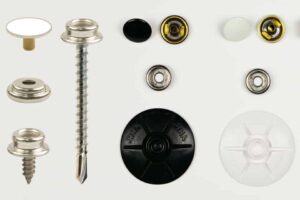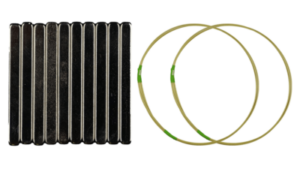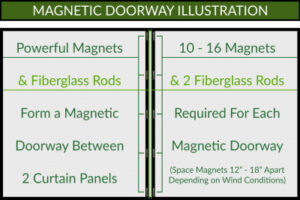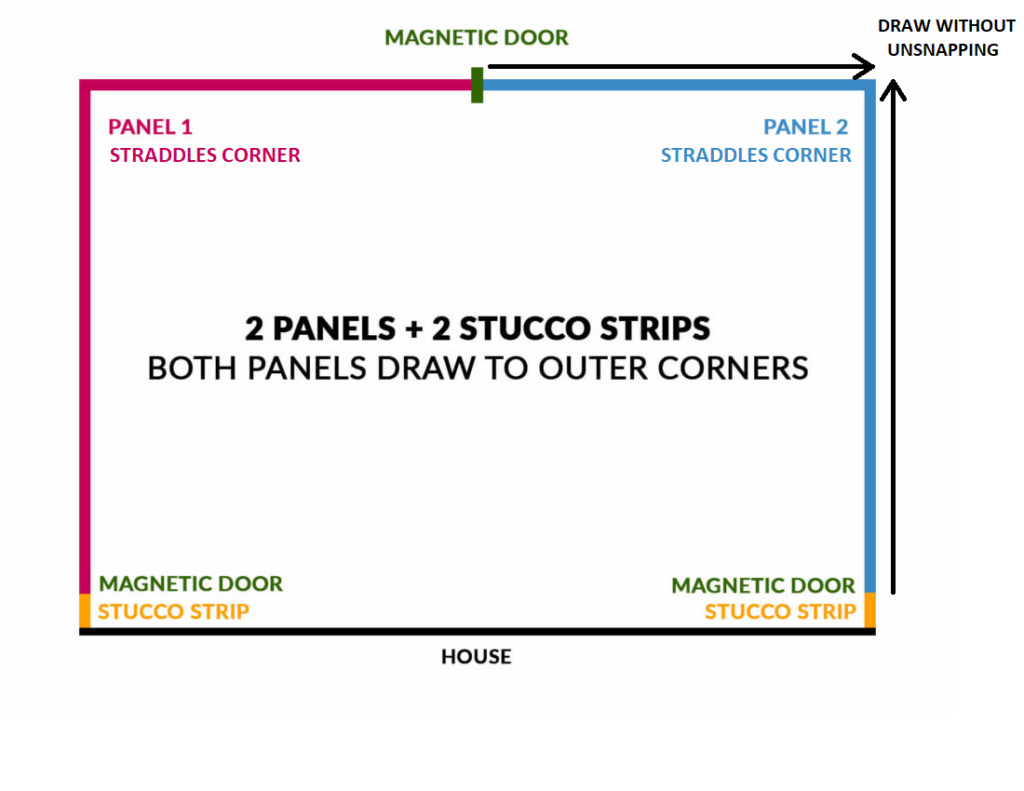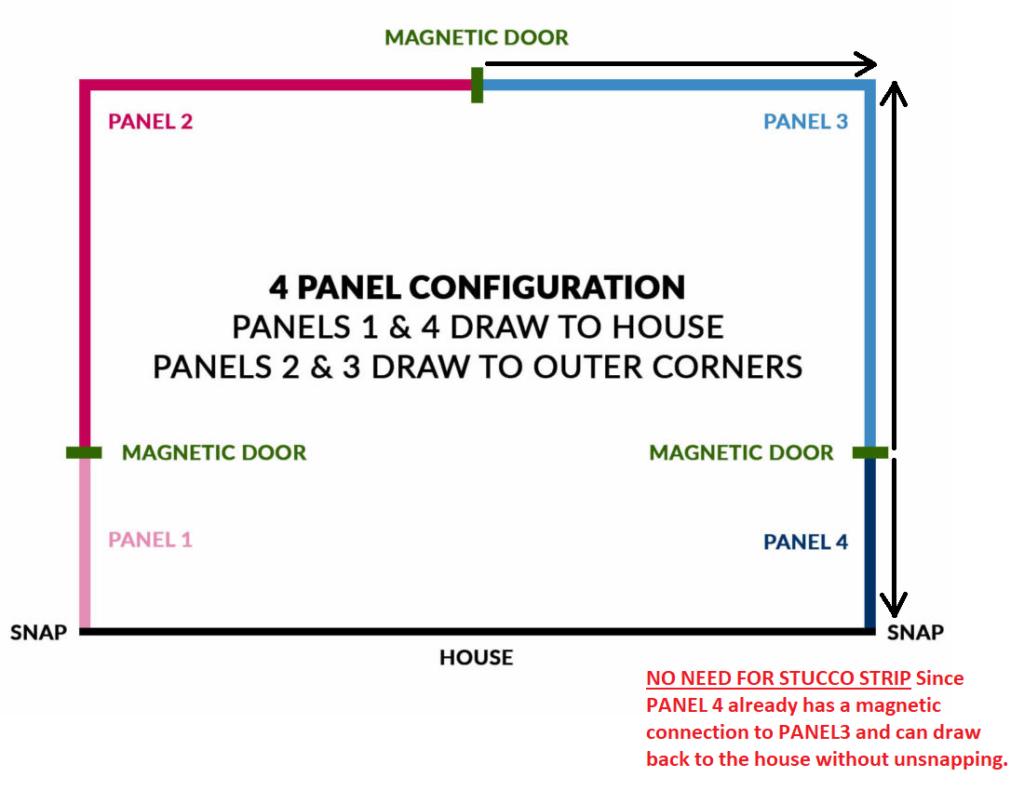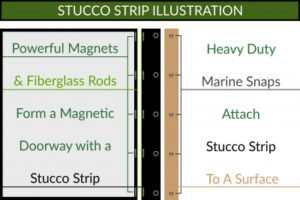3. Magnetic Doorways & Fasteners
Marine Snaps To Seal Sides To Some Surface

Marine Snaps in Under 90 Seconds
Magnetic Doorways Seal Panels to Other Panels

Magnetic Doorways in Under 90 Seconds
Powerful Neodymium Magnets & Fiberglass Rods
Stucco Strips
First, it is still a mystery why we call it a Stucco Strip, since it has absolutely nothing to do with stucco at all and please do not let the term confuse you. The name just stuck many years ago. As you will learn, a stucco strip is simply a mini 3-inch wide panel.
Ideally, you do not want to ever have to unsnap your curtain to draw it open. There are times (typically against the house) where you may or may not want to unsnap the curtain from the house to draw it to an outer corner.
While it is possible to snap panels directly to the house, we never want you to have to unsnap curtains to open them because it is a pain in the neck with our hard action snaps. Snapping and unsnapping panels may require a ladder when a magnetic connection would be far easier to separate even when panels are tall and out of reach.
Stucco Strips are NOT Required, but they sure make drawing far easier if there is no other magnetic connection on a particular side.
Again, think of a Stucco Strip as a mini 3-inch wide panel. It is not a fastener, it is technically a panel in every way made of a solid webbing material.
One edge of the 3″ Stucco Strip snaps to a structural surface like a wall or column while the other edge is set up for a magnetic connection to a larger panel. The stucco strip always stays snapped to the wall, but because we can use the stucco strip to magnet to a larger panel, the larger panel can be drawn much easier without having to snap and unsnap your porch enclosure.
Because a Stucco Strip is just a mini panel, it is ordered from the “Panels Page” when you place your order. Like any other panel, you will also need to order the magnetic doorway hardware and marine snaps since stucco strips ALWAYS magnet to some larger panel and the other vertical edge ALWAYS snaps to some surface.
Sealing the Base
There is something a bit counter intuitive about securing the base of your curtain. At first, you might think the best way to secure the bottom is to pull it straight down and perhaps tie it down or weight it, however the key to securing the base is horizontal tension. Weights do not work for outdoor curtains because they aren’t heavy enough and weights drive the base of the curtain into the floor wearing it faster. Instead, use Marine Snaps to secure the base and Elastic Cord described below.
Imagine for a moment, we laid a 20ft belt from the Jolly Green Giant on the side walk. If you step on one end, and Mr. Jolly Green stands on the other end, it would be hard to lift the middle of the belt. The little bit of horizontal tension would be enough to keep the belt down. Marine snaps every 6 – 12ft help to maintain horizontal tension along the base especially in the corners. Generally, this is the spacing of support columns where marine snaps can be placed into the base of the column.

Sealing the Base (1:05)
Elastic Cord – “Vertical Ribs”
Curtains with tracking attachment typically take a path on the inside of your columns often with configurations where panels straddle a corner. Elastic cord “pinches” the curtain to the corner column. Think of elastic cord as a large bungee cord clipped vertically between 2 D-rings. Elastic cord is not attached to the curtain at all. It acts as a false column giving the curtain a corner rib inside the curtain to brace the curtain in the breeze and help to maintain horizontal tension.
These vertical elastic cord ribs can be placed anywhere to add support to the curtain in breezy conditions (not just at corners). The best location is in front of columns to act as a giant rubber band to “pinch” the curtain to the column.

Elastic Cord (0:58)

